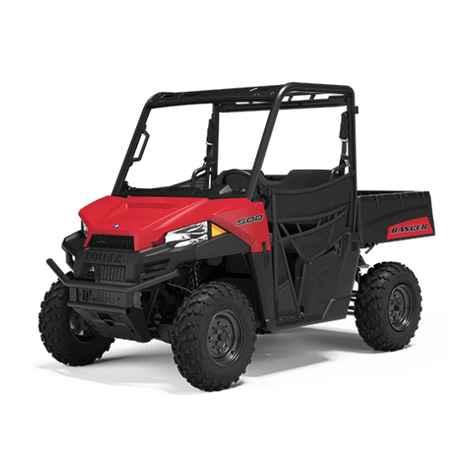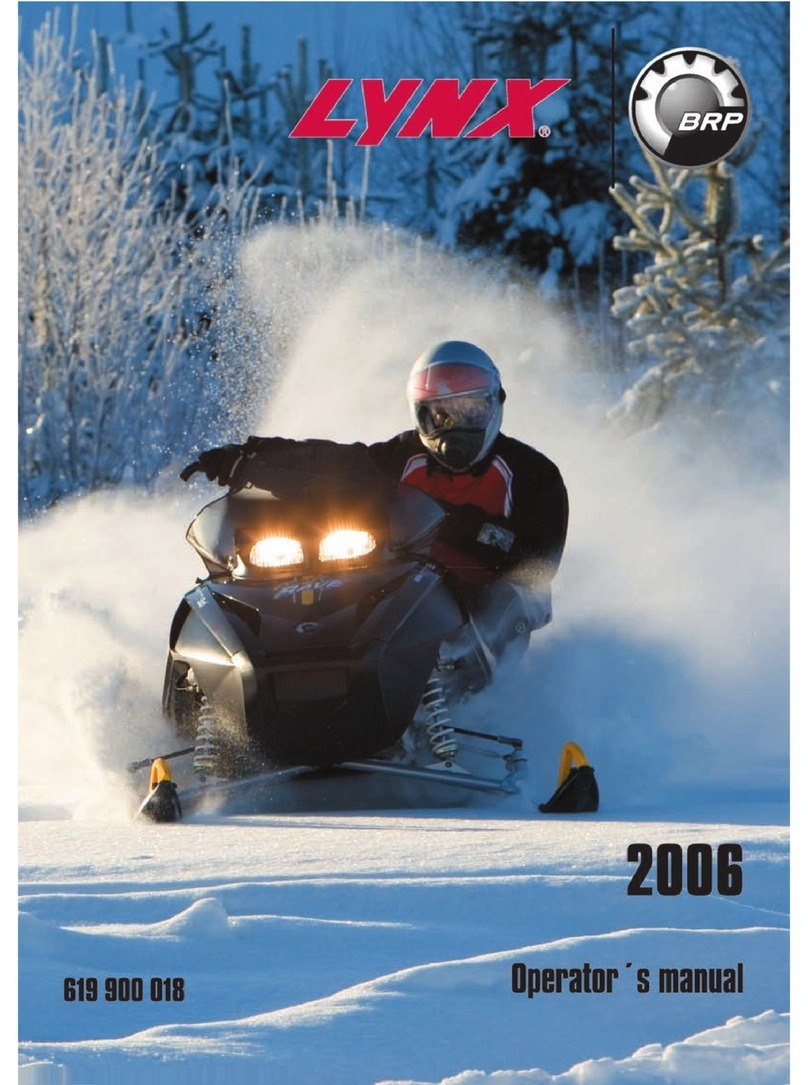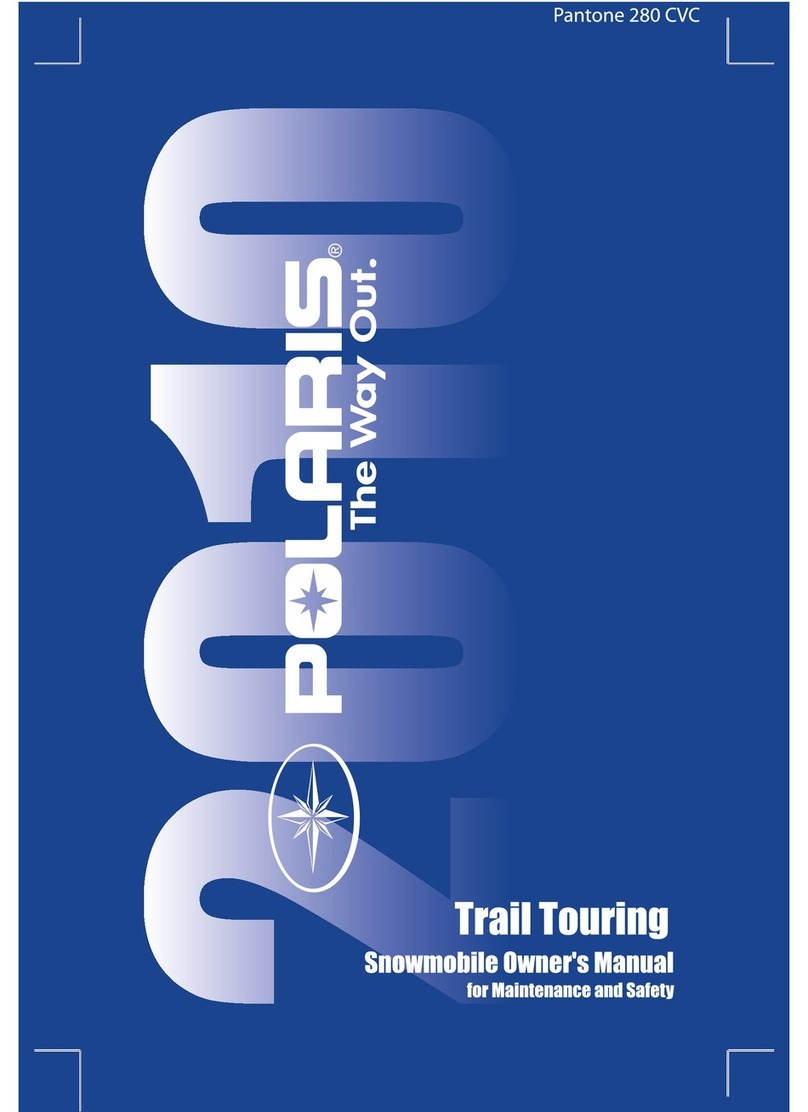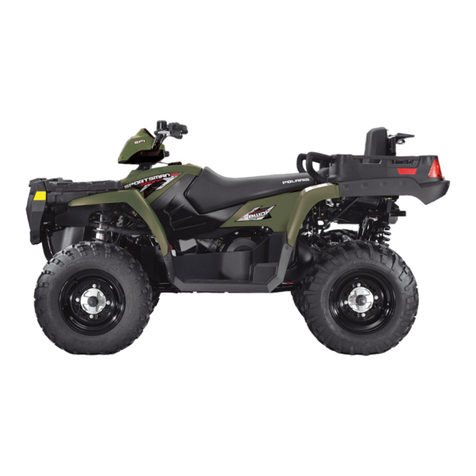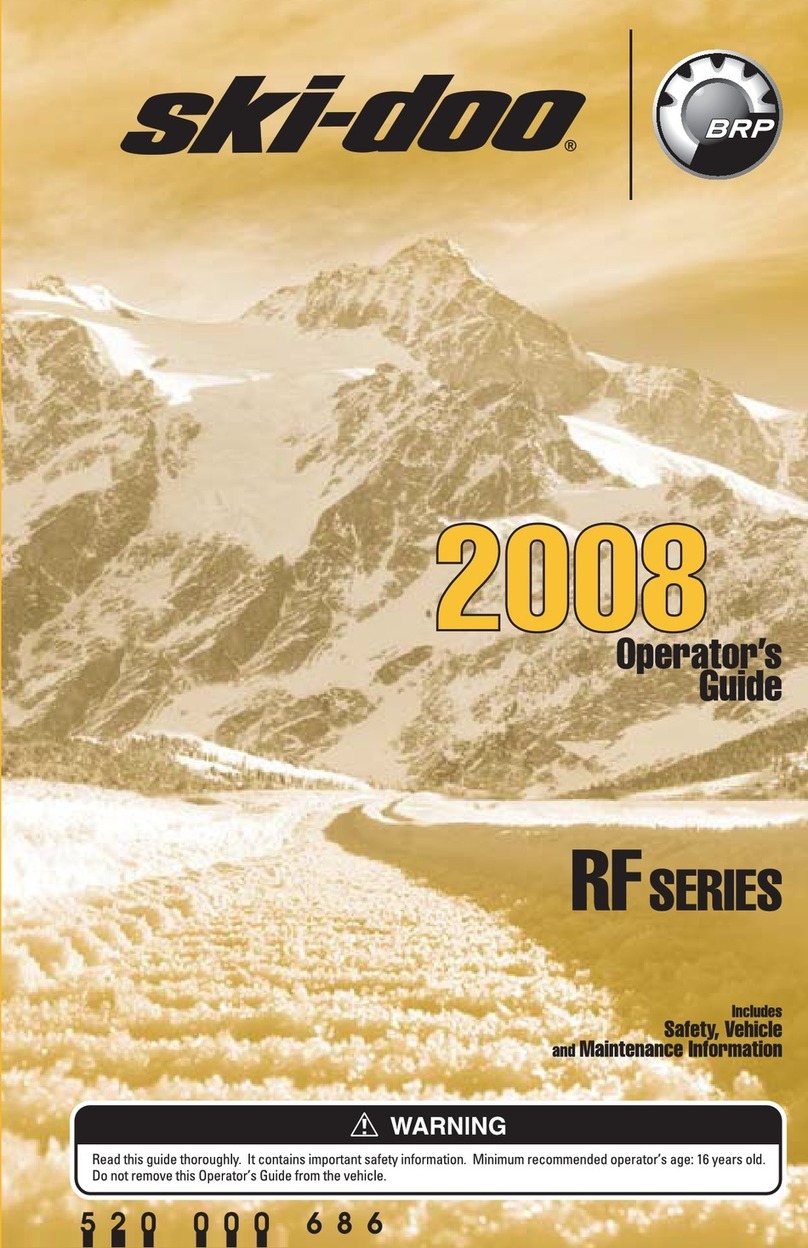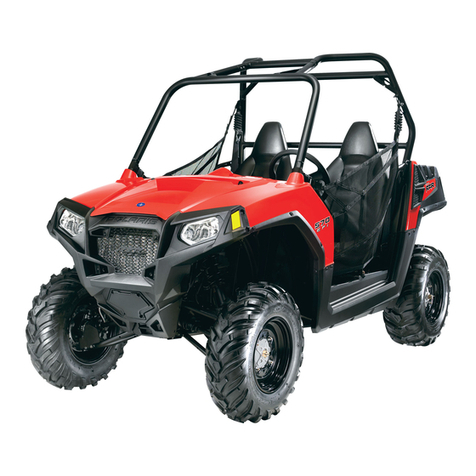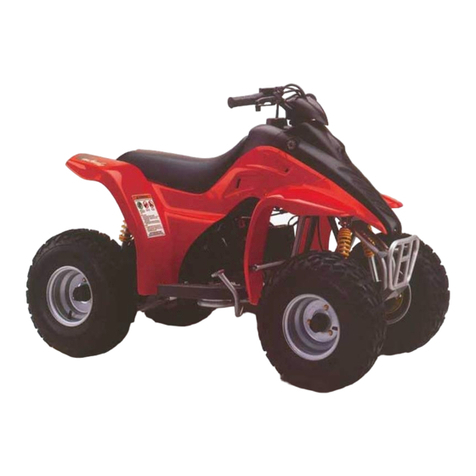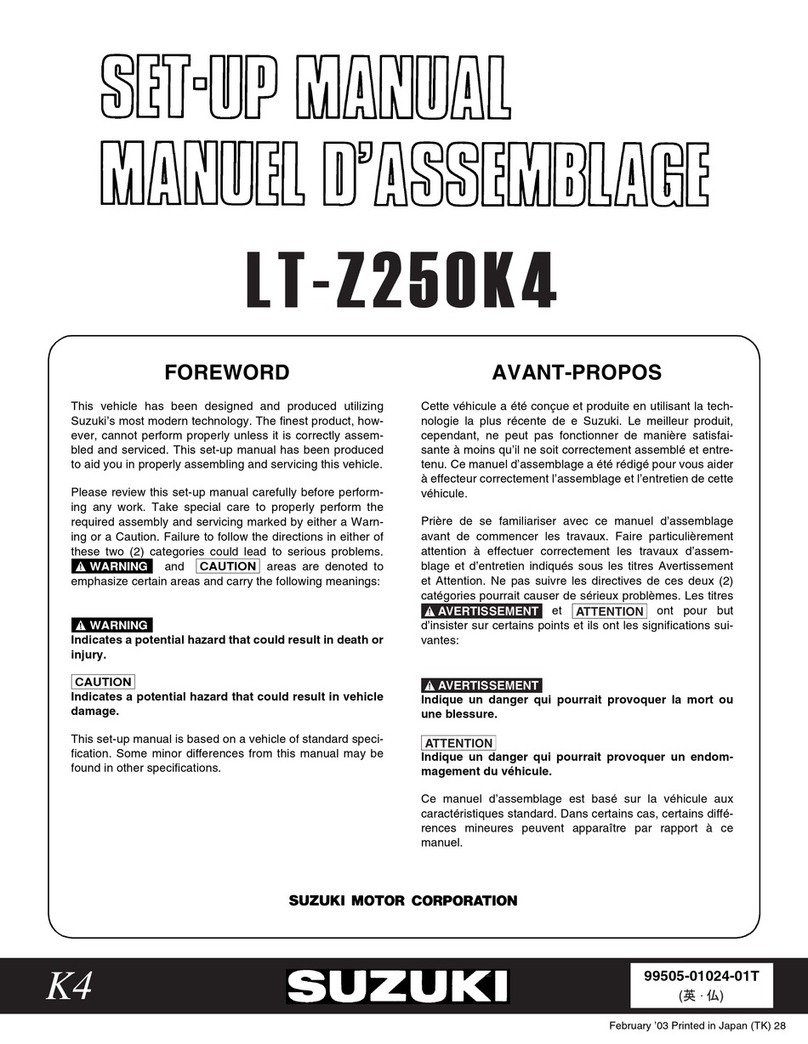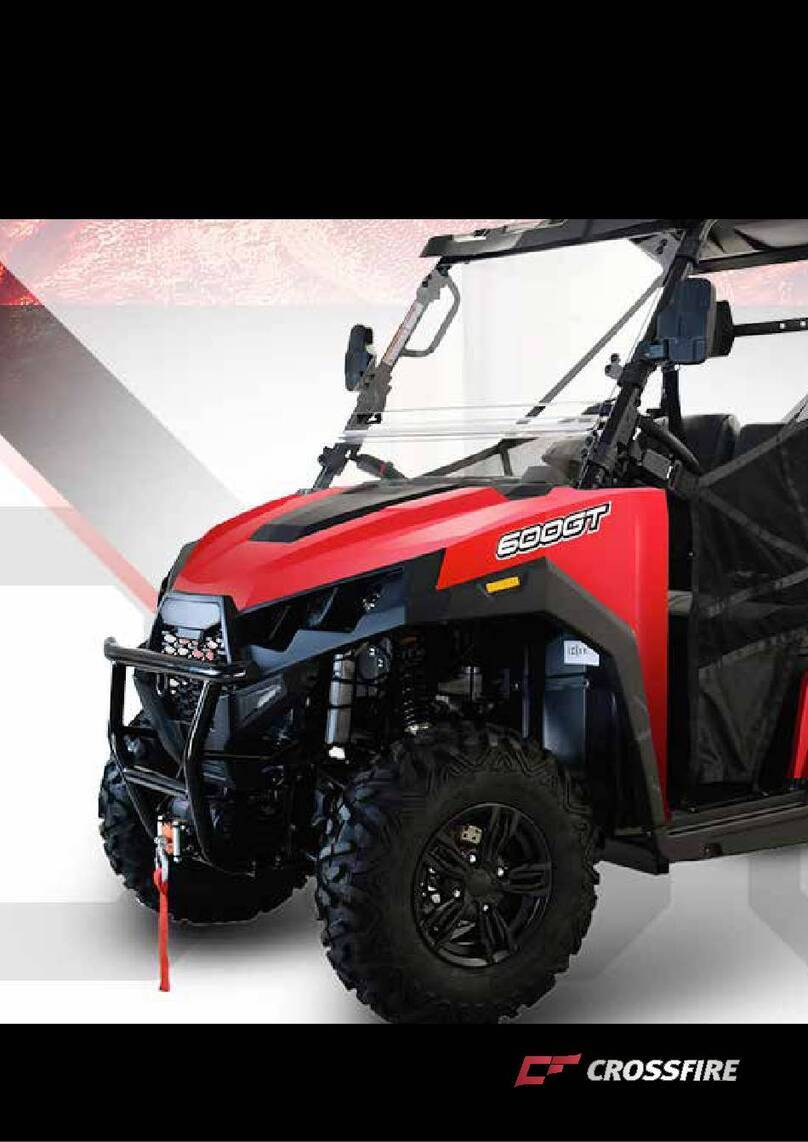Crossfire TERRITORY 500 2000 User manual

CROSSFIRE
TERRITORY 500
USER MANUAL

Owner Manual

Owner Manual
INTRODUCTION
Congratulations on your purchase of the HS500ATV-4/HS700ATV-4. This Owner’s / Operator’s
manual will provide you information regarding safe operation, operational instructions, maintenance
and care. Fully understanding this manual and following all of the instructions herein will provide the
knowledge needed to have safe and enjoyable ATV operation.
For questions regarding this ATV, please call (972) 446-0760.
IMPORTANT SAFETY MESSAGES
● READ THIS MANUAL CAREFULLY AND COMPLETELY BEFORE OPERATING YOUR ATV. MAKE
SURE YOU UNDERSTAND ALL INSTRUCTIONS.
● PAY CLOSE ATTENTION TO THE WARNING AND CAUTION LABELS ON THE ATV.
● NEVER OPERATE THE ATV WITHOUT PROPER TRAINING OR INSTRUCTION.
● THIS ATV, AND ANY OTHER ATV OVER 90cc, SHOULD NOT BE RIDDEN BY ANYONE UNDER 16
YEARS OF AGE.

Owner Manual
IMPORTANT MANUAL INFORMATION
FAILURE TO FOLLOW THE WARNINGS CONTAINED IN THIS MANUAL CAN RESULT IN SERIOUS
INJURY OR DEATH. Particularly important information is distinguished in this manual by the
following notations:
The Safety Alert Symbol means ATTENTION!
YOUR SAFETY IS INVOLVED!
Failure to follow WARNING instructions could result in severe injury or
death to the machine operator, a bystander or a person inspecting or
repairing the machine.
A CAUTION indicates special precautions that must be taken to avoid
damage to the machine.
A NOTE provides key information to make procedures easier or clearer.
NOTE:

Owner Manual
IMPORTANT NOTICE
Curve speed must be smaller than 30km/h.
This ATV is designed and manufactured for OFF - ROAD use only. It is illegal and unsafe
to operate this ATV on any public street, road or highway.
This ATV complies with all applicable OFF - ROAD noise level and spark arrester laws and
regulations in effect at the time of manufacture.
Please check your local riding laws and regulations before operating this ATV.
When the temperature is below -20℃ (-4°F), please park the ATV in the place where the
temperature is higher than -20℃ (-4°F). After the ATV has warmed up, the ATV can be started.
Please see page 6-3 on the warming up process.
When the temperature is higher than 38℃ (100°F), and when you park the ATV after it run
at high speed, please keep engine running for 3 minutes at idle mode and make sure that the
radiator fan still work for 3 minutes to prevent cooling water from boiling. Then turn off the
power switch to save the battery.
When you park the ATV and cut off the engine, please turn off the ignition switch to stop meter
displaying. With EFI system use for this ATV, the electric fuel pump in the fuel tank can work
when the meter displays. If the fuel pump work for a long time ,it will result in battery power loss
and failure to electric start.

Owner Manual
Location of the Warning and
Specification Labels 1-1
Safety Information 2-1
Description and Vehicle
Identification 3-1
Identification Number Records 3-2
Vehicle Identification Number 3-2
Control Functions 4-1
Main Switch 4-1
Indicator and Warning Lights 4-2
Use of EPS system 4-3
Speedometer Unit 4-5
Clock time adjustment 4-6
Four-wheel drive indicator 4-6
Differential gear lock indicator 4-7
Fault code indicator 4-8
Fuel level indicator 4-8
Handlebar Switches 4-9
Throttle Lever 4-14
Speed Limiter 4-15
Front Brake Lever 4-17
Brake Pedal and Rear Brake
Lever 4-17
Drive Select Lever 4-18
Fuel Tank Cap 4-18
Seat 4-19
Storage Compartment 4-19
Front Carrier 4-20
Rear Carrier 4-21
Front and Rear Shock Absorber
Adjustment 4-21
Auxiliary DC Jack 4-23
Pre Operation Checks 5-1
Front and Rear Brakes 5-2
Fuel 5-4
Engine Oil 5-6
Final Gear Oil 5-6
Differential Gear Oil 5-7
1
2
3
4
5

Owner Manual
Coolant 5-7
Throttle lever 5-8
Fittings and Fasteners 5-8
Lights 5-8
Switches 5-8
Tires 5-9
How to Measure Tire Pressure 5-10
Tire Wear Limit 5-11
Operation 6-1
Starting a Cold Engine 6-1
Starting a Warming Engine 6-2
Warming Up 6-2
Drive Select Lever Operation
and Reverse Driving 6-2
Engine Break-In 6-5
Parking 6-7
Parking on a Slope 6-7
Accessories and Loading 6-8
Your Vehicle 7-1
Driving Your Vehicle 7-1
Ride With Care and Good
Judgment 7-1
Apparel 7-4
Speed Limiter 7-8
Loading and Accessories 7-8
During Operation 7-9
Modifications 7-11
Exhaust System 7-11
Be Careful Where You Ride 7-12
Turning Your ATV 7-18
Climbing Uphill 7-21
Riding Downhill 7-26
Crossing a Slope 7-28
Crossing Through Shallow
Water 7-29
Riding Over Rough Terrain 7-32
Sliding and Skidding 7-33
Periodic Maintenance and
Adjustment 8-1
6
78

Owner Manual
Owner’s Manual and Tool Kit 8-1
Periodic Maintenance Chart for
the Emission Control System 8-3
General Maintenance and
Lubrication Chart 8-4
Panel Removal and Installation 8-6
EFI System 8-13
EFI System Inspection 8-17
Engine Oil and Oil Filter
Cartridge 8-18
Final Gear Oil 8-22
Differential Gear Oil 8-23
Cooling System 8-25
Changing the Coolant 8-27
Axle Boots 8-29
Spark Plug Inspection 8-30
Air Filter Elements Cleaning 8-32
Spark Arrester Cleaning 8-36
V-belt Cooling Duct Check Hose 8-37
V-belt Case Drain Plug 8-37
Valve Clearance Adjustment 8-38
Select Lever Safety System
Cable Adjustment 8-38
Throttle Lever Adjustment 8-38
Front Brake Pad Check 8-39
Checking the Rear Brake Pads 8-39
Checking the Brake Fluid Level 8-40
Brake Fluid Replacement 8-41
Front Brake Lever Free Play 8-42
Adjusting the Rear Brake Lever 8-42
Adjusting the Brake Pedal 8-43
Adjusting the Rear Brake Light
Switch 8-44
Cable Inspection and Lubrication 8-45
Lubricating the Brake Levers
and Brake Pedal 8-46
Rear Knuckle Upper and Lower
Pivot Lubrication 8-47
Wheel Removal 8-47
Wheel Installation 8-48
Battery 8-49
Battery Maintenance 8-50

Owner Manual
Fuse Replacement 8-50
Replacing A Headlight Bulb 8-51
Headlight Beam Adjustment 8-53
Tail/Brake Light Bulb
Replacement 8-53
Check and Solution to Common
Problems in Vehicle 8-55
Cleaning and Storage 9-1
Cleaning 9-1
Storage 9-2
Specifications 10-1
Fault code of Electronic
Injection System 11-1
USA EPA Emissions Limited
Warranty 12-1
9
10
11
12

Location of the Warning and Safety Labels 1-1
LOCATION OF THE WARNING AND SPECIFICATION LABELS
\
②
⑫

1-2 Location of the Warning and Safety Labels
Read and understand all of the labels on
your machine. They contain important
information for safe and proper operation of
your ATV.
Never remove any labels from your ATV. If a
label becomes difficult to read or comes off, a
replacement label is available from your
dealer.
①
②
③

Location of the Warning and Safety Labels 1-3
④
⑤
⑥

1-4 Location of the Warning and Safety Labels
⑦
⑧

Location of the Warning and Safety Labels 1-5
⑨
⑩
⑪
⑫

2-1 Safety Information
AN ATV IS NOT A TOY AND CAN BE HAZARDOUS TO OPERATE. An ATV handles
differently from other vehicles including motorcycles and cars. A collision or rollover can occur
quickly, even during routine maneuvers such as turning and riding on hills or over obstacles, if
you fail to take proper precautions.
SEVERE INJURY OR DEATH can result if you do not follow these instructions:
Read this manual and all labels carefully and follow the operating procedures described.
Never operate an ATV without proper training or instruction. Take a Training Course.
Beginners should receive training from a certified instructor.
Always follow the age recommendation:
A child under 16 years old should never operate an ATV with engine size greater
than 90cc.
Never allow a child under age 16 to operate an ATV without adult supervision, and never
allow continued use of an ATV by a child if he or she does not have the abilities to operate
it safely.
SAFETY INFORMATION

Safety Information 2-2
Never operate an ATV without wearing an approved motorcycle helmet that fits properly.
You should also wear eye protection (goggles or face shield), gloves, boots, long-sleeved
shirt or jacket, and long pants.
Never consume alcohol or drugs before or while operating this ATV.
Never operate at speeds too fast for your skills or the conditions. Always go at a speed that
is proper for the terrain, visibility and operating conditions, and your experience.
Never attempt wheelies, jumps, or other stunts.
Always inspect your ATV each time you use it to make sure it is in safe operating condition.
Always follow the inspection and maintenance procedures and schedules described in this
manual.
Always keep both hands on the handlebars and both feet on the footboards of the ATV
during operation.
Always go slowly and be extra careful when operating on unfamiliar terrain. Always be alert
to changing terrain conditions when operating the ATV.
Never operate on excessively rough, slippery or loose terrain until you have learned and
practiced the skills necessary to control the ATV on such terrain. Always be especially
cautious on these kinds of terrain.

2-3 Safety Information
Always follow proper procedures for turning as described in this manual. Practice turning
at low speeds before attempting to turn at faster speeds. Do not turn at excessive speed.
Never operate the ATV on hills too steep for the ATV or for your abilities. Practice on
smaller hills before attempting larger hills.
Always follow proper procedures for climbing hills as described in this manual. Check the
terrain carefully before you start up any hill. Never climb hills with excessively slippery or
loose surfaces. Shift your weight forward. Never open the throttle suddenly. Never go over
the top of a hill at high speed.
Always follow proper procedures for going down hills and for braking on hills as described
in this manual. Check the terrain carefully before you start down any hill. Shift your weight
backward. Never go down a hill at high speed. Avoid going down a hill at an angle that
would cause the vehicle to lean sharply to one side. Go straight down the hill where
possible.
Always follow proper procedures for crossing the side of a hill as described in this manual.
Avoid hills with excessively slippery or loose surfaces. Shift your weight to the uphill side of
the ATV. Never attempt to turn the ATV around on any hill until you have mastered the
turning technique described in this manual on level ground. Avoid crossing the side of a

Safety Information 2-4
steep hill if possible.
Always use proper procedures if you stall or roll backwards when climbing a hill. To avoid
stalling, use proper gear range and maintain a steady speed when climbing a hill. If you
stall or roll backwards, follow the special procedure for braking described in this manual.
Dismount on the uphill side or to a side if pointed straight uphill. Turn the ATV around and
remount, following the procedure described in this manual.
Always check for obstacles before operating in a new area. Never attempt to operate over
large obstacles, such as large rocks or fallen trees. Always follow proper procedures when
operating over obstacles as described in this manual.
Always be careful when skidding or sliding. Learn to safely control skidding or sliding by
practicing at low speeds and on level, smooth terrain. On extremely slippery surfaces,
such as ice, go slowly and be very cautious in order to reduce the chance of skidding or
sliding out of control.
Never operate an ATV in fast flowing water or in water deeper than that recommended in
this manual. Remember that wet brakes may have reduced stopping ability. Test your
brakes after leaving water. If necessary, apply them several times to let friction dry out the
linings.

2-5 Safety Information
Always be sure there are no obstacles or people behind you when you operate in
reverse.
When it is safe to proceed in reverse, go slowly.
Always use the size and type tires specified in this manual.
Always maintain proper tire pressure as described in this manual.
Never modify an ATV through improper installation or use of accessories.
Never exceed the stated load capacity for an ATV. Cargo should be properly distributed
and securely attached. Reduce speed and follow instructions in this manual for carrying
cargo or pulling a trailer. Allow greater distance for braking.

Safety Information 2-6
WARNING
POTENTIAL HAZARD
Starting or running the engine in a closed area.
WHAT CAN HAPPEN
Exhaust fumes are poisonous and may cause loss of consciousness and death within a short time.
HOW TO AVOID THE HAZARD
Always operate your ATV in an area with adequate ventilation.
This manual suits for next models
2
Table of contents
Other Crossfire Offroad Vehicle manuals

Crossfire
Crossfire Tonka 125 User manual

Crossfire
Crossfire 1000GTR Manual
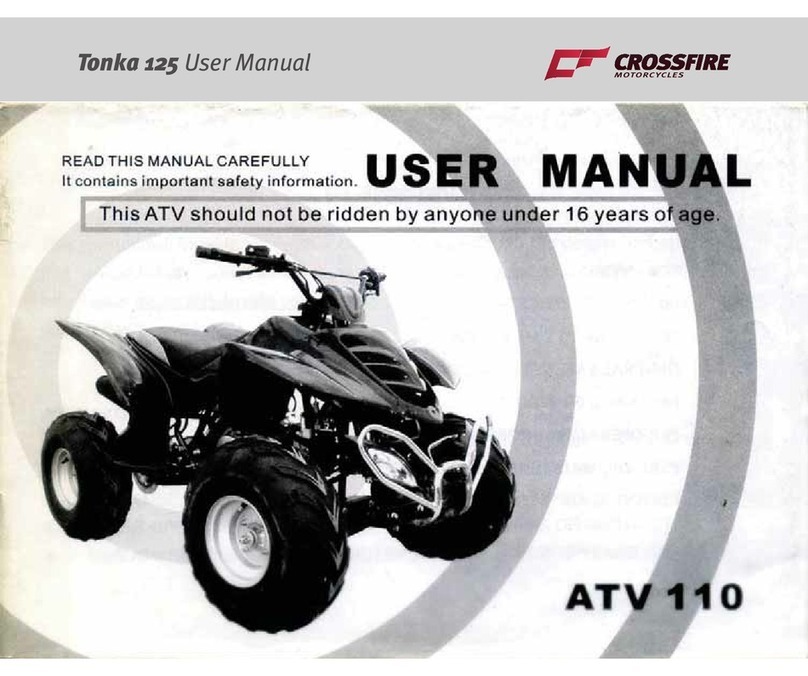
Crossfire
Crossfire Tonka 125 User manual

Crossfire
Crossfire Kongo 50 User manual

Crossfire
Crossfire HS800ATV-2 Manual

Crossfire
Crossfire 500ATV User manual
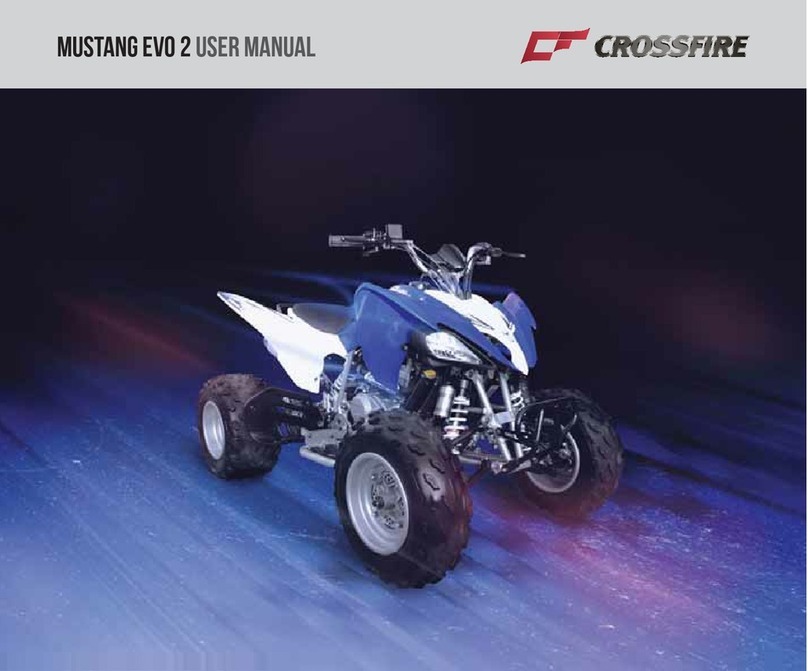
Crossfire
Crossfire Mustang Evo 2 User manual

Crossfire
Crossfire Kanga 90 User manual
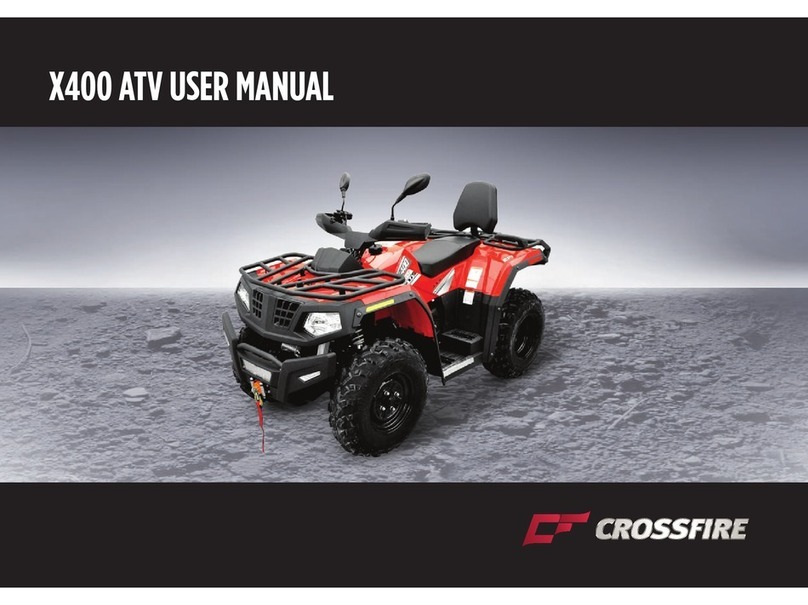
Crossfire
Crossfire X400 User manual

